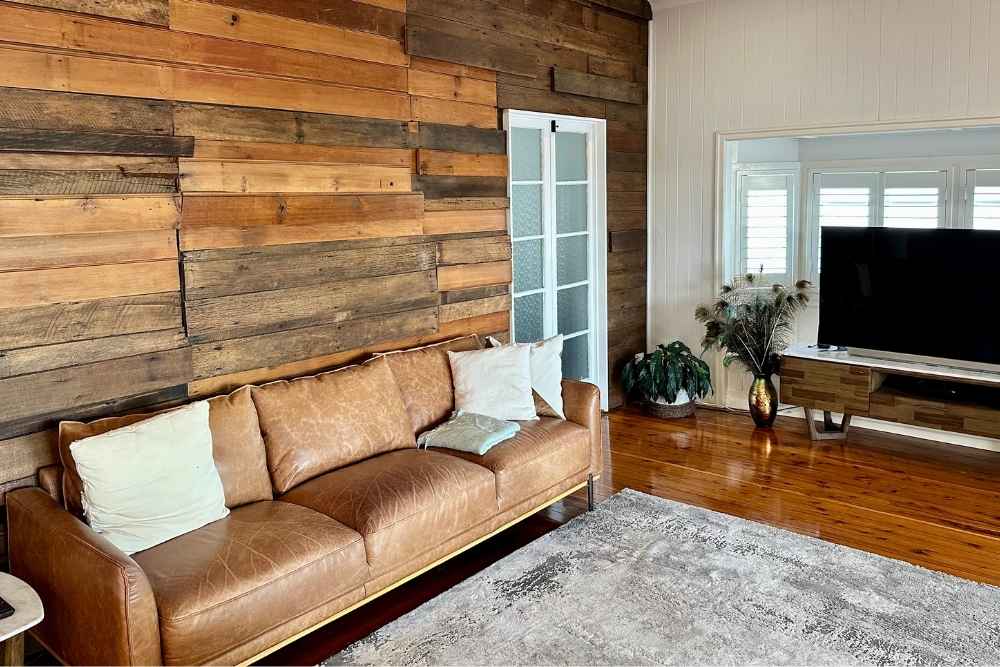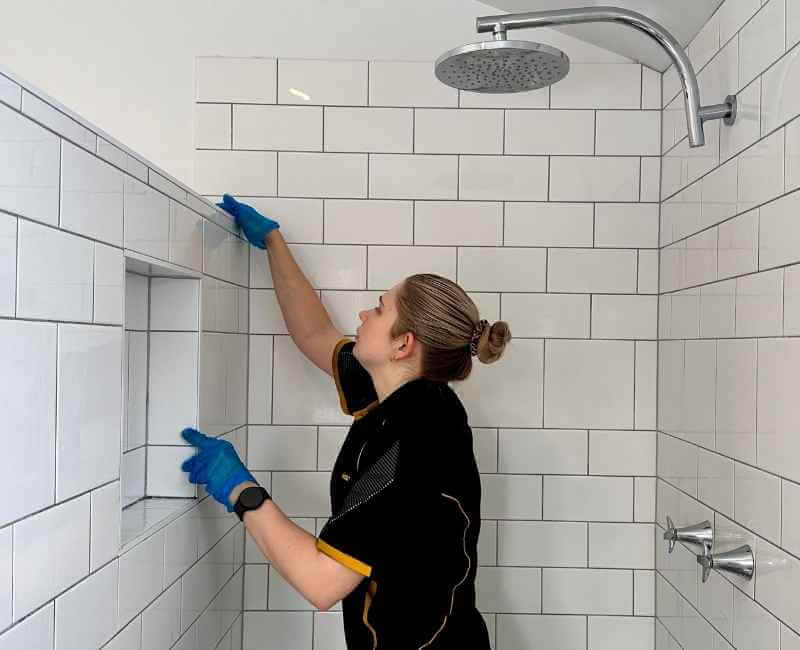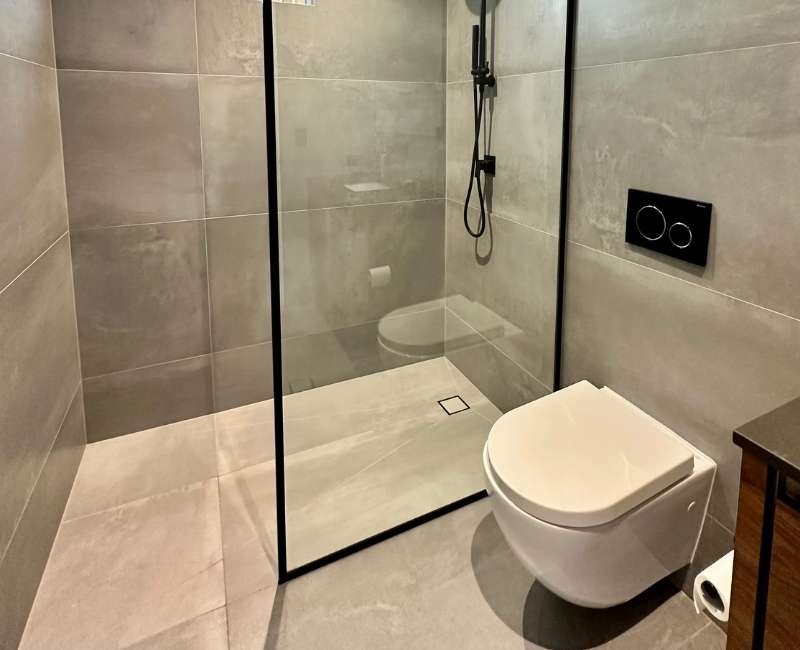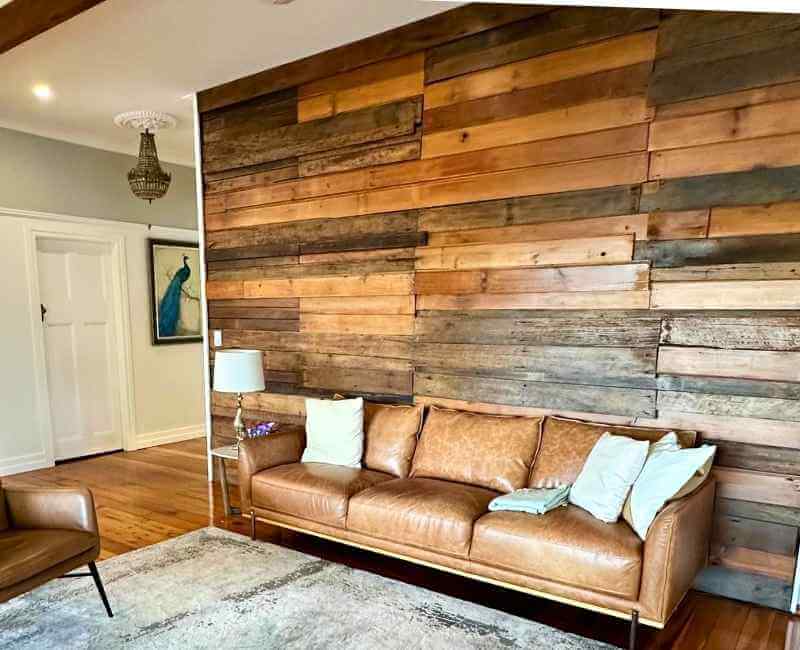Vinegar and hydrogen peroxide get a lot of love as versatile home cleaning solutions, but here’s an underrated cleaner for you: sugar soap!
This powerful soap (or detergent) is handy for cleaning tough grime, removing stains, and even mopping floors. And it’s easy to use — just mix the powder or liquid form with water.
A spoonful of sugar soap makes the grease and dirt go down. (Well, not really a spoonful — at least half a cup.) Here’s how to use sugar soap when cleaning your home.
Before Cleaning | How to Clean With Sugar Soap | Sugar Soap Uses | What Not to Clean | Does It Remove Mould?
What is Sugar Soap?
No sweet treats here — sugar soap is an abrasive cleaner containing sodium carbonate, sodium hydroxide, or potassium hydroxide. It is not pH-neutral, but has an alkaline pH level from 8–10.
Why is it called sugar soap? The name comes from the small granules in the product, which look and feel like sugar!
As a water-soluble cleaner, sugar soap usually comes as either a dry powder or a liquid concentrate. It must be diluted before use.
More recently, you can get ready-to-use products, such as wipes or sprays.
In North America, you may see this product called TSP (from trisodium phosphate). Here in Australia, you’ll commonly find it sold under the name Selleys!
Before Cleaning With Sugar Soap
As with other chemical cleaners, it’s good to learn proper precautions before you clean with sugar soap around your home.
What does sugar soap do?
Sugar soap is primarily used to clean walls before applying paint, or to refresh painted surfaces before a fresh coat.
However, sugar soap also works for general cleaning around your home! It’s most often used to clean kitchen or bathroom surfaces, since it’s effective at stripping grease and dirt.
Always test the product on an inconspicuous spot first so you’re sure it won’t cause damage.
Is sugar soap dangerous?
Sugar soap isn’t strictly dangerous or toxic, but like other chemical cleaners, it should be used with caution.
Always wear rubber gloves when cleaning with sugar soap, as it can cause irritation and dryness with contact. Protective goggles are also recommended.
Seek medical attention if the product gets into your eyes or is accidentally ingested.
Sugar soap can also cause irritation for pets upon contact with skin, and is toxic if ingested, especially for cats. Take your pet to the vet if they’ve licked the product.
Never mix sugar soap with anything but water, unless the product states otherwise.
How to Use Sugar Soap for General Cleaning
Before anything else, wear protective gear! That includes goggles and rubber gloves, and a face mask if you’re working with the powdered form.
Dilute the product according to the package instructions. Both powder and liquid sugar soap need to be diluted in water — usually around 1 part sugar soap to 10 parts warm water.
Dip a soft cloth or sponge into the solution, then wring it out so it’s just damp. Carefully wipe the surface clean.
For vertical surfaces, transfer the sugar soap solution to a spray bottle. Lightly spritz the dirty surface and wait 30–60 seconds, then scrub it clean with a soft cloth or sponge.
Rinse off any residue with a damp cloth, then wipe the area dry.
Sugar Soap Uses Around Your Home
Sugar soap can do more than just clean walls in your home!
It’s an effective, multi-purpose product for several cleaning tasks — here are some suggestions from our pro house cleaners.
Bathroom surfaces
Sugar soap is pretty effective at removing soap scum and other grime on bathroom surfaces — especially ceramic or porcelain ones.
Use a diluted solution to scrub your bathtub, shower floors, sinks, and even the toilet! Rinse the surfaces thoroughly afterwards to prevent a buildup of residue.
Skip the product when cleaning shower glass, though, as it might leave streaks or a residue that’s hard to get off.
Kitchen surfaces
Need to remove grease from kitchen cabinets, benchtops, or backsplashes? Give sugar soap a try!
Gently scrub greasy surfaces in circular motions, using a sugar soap solution and a microfibre cloth or soft sponge. For very tough grease, let the solution sit for 1–2 minutes before scrubbing.
Rinse off the residue with a clean cloth dampened in water, then wipe everything dry.
NOTE: Avoid using it to clean stone benchtops, especially unsealed stone — you could dull or etch the finish.
Hard floors
Sugar soap is an effective cleaner for hard floors — namely linoleum, vinyl, and tile! It’s also generally safe for sealed hardwood floors, but consult the manufacturer just in case.
When mopping your floors with sugar soap, keep an eye on the cleaning solution. It can get dirty quickly, so you’ll have to change it out when it gets dark.
Always follow with a clean mop and fresh water to rinse, then another mop to dry.
Stain removal
For stubborn stains on hard surfaces (such as linoleum or tile), sugar soap is a great solution. It even works on dried grease or old nicotine stains.
Use a diluted sugar soap solution and a non-abrasive sponge to scrub the stains off. For very tough stains, you can apply a small amount of undiluted product, then scrub gently.
Do not let the solution sit on the surface for more than a few minutes. Rinse off any residue ASAP with a clean cloth dampened in water, then dry the surface.
Walls
Sugar soap is commonly used when preparing walls before painting, but it’s effective for deep cleaning walls as well!
In a bucket, dilute the sugar soap as directed on the package. Fill a separate bucket with clean water for rinsing.
Dip the head of a flat mop into the solution, then wring it out so it’s just damp. Use that to apply the solution to your walls, working in small sections from top to bottom.
Replace the cleaning solution when it becomes murky, then continue cleaning.
When you’re done, change the mop pad, then dip it in clean water to rinse off any residue. Wipe the walls dry ASAP.
BTW — you can also use it to clean grease and grime on skirting boards.
Wood surfaces
You can use sugar soap to clean painted or sealed wood (like furniture), although you should always double-check with the manufacturer!
Test the product on an inconspicuous spot first, too.
To use sugar soap on wood, dilute it according to package instructions and apply the solution with the grain. Avoid using undiluted sugar soap on wood.
After cleaning, wipe off the excess with a damp cloth immediately — do not leave it on the surface. Dry the wood thoroughly.
What Not to Clean With Sugar Soap
For walls, avoid using sugar soap on flat or matte painted walls unless you’re retouching. The abrasiveness can discolour or scuff the paint.
Do not use it on unsealed wood or soft metals (like aluminium and brass surfaces), since it can cause staining, oxidation, and other damage.
It’s not recommended for use on glass (such as windows), since it’s prone to leaving streaks or marks that are difficult to remove. When cleaning windows or shower glass, stick to a white vinegar solution or glass cleaner!
Skip it when cleaning stone surfaces. You could dull or etch the material, especially with natural stones like marble and granite.
Lastly, avoid applying sugar soap to highly-polished or glossy surfaces, since it can dull or scuff the shine.
Does Sugar Soap Kill Mould?
Sugar soap can clean surface-level or visible mould, but it won’t kill mould spores that have penetrated the material.
You’re better off removing mould using more effective solutions such as vinegar, borax, or hydrogen peroxide.
For areas larger than 0.9 square metres, you’ll need professional mould remediation services.
FAQs About Using Sugar Soap for Cleaning
Have more questions about cleaning with sugar soap? We’ve got you covered!
Do you have to rinse off sugar soap?
For general cleaning purposes, you do need to rinse sugar soap after use! Use a damp cloth to wipe off any residue and prevent possible buildup.
If you’re prepping a wall for painting, there’s usually no need to rinse, although you can wipe the surface after cleaning.
What are sugar soap alternatives?
There are several alternatives to sugar soap if it’s not available!
Other effective cleaners include:
- Baking soda
- Diluted white vinegar
- Washing soda (or soda crystals)
Don’t mix them together — each solution works on its own. Washing soda will be the easiest and most cost-effective alternative, since you can buy it in bulk and dilute it in water.
Does sugar soap remove paint?
Sugar soap generally does not remove paint — it just helps prep the wall beforehand. However, the abrasiveness can damage the finish on flat or matte painted walls.
It can also strip or damage poor-quality paint.
Can you use sugar soap on carpet?
No, you should not use sugar soap to clean a carpet, even for stains. The product could damage the fibres or the backing underneath, and it could leave a residue.
Instead, use dedicated carpet cleaners or mild solutions like vinegar.




